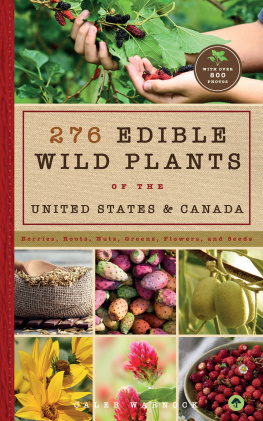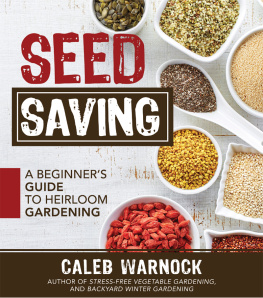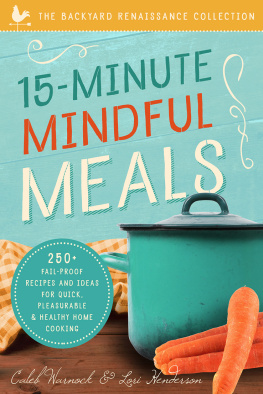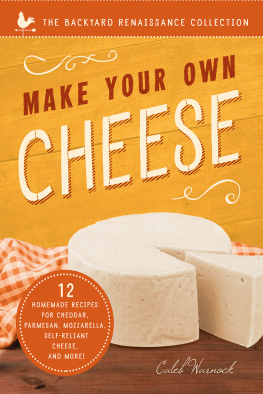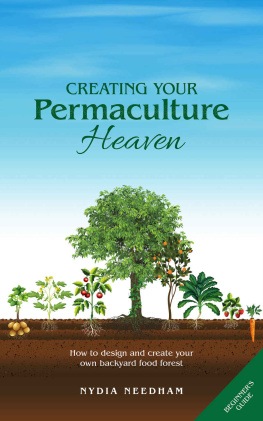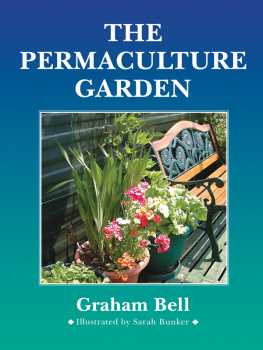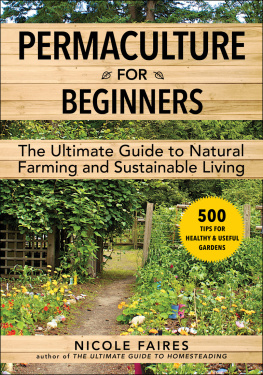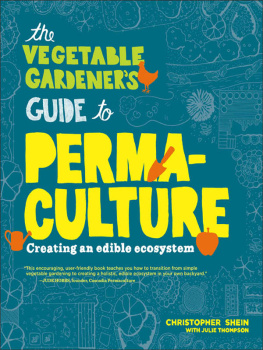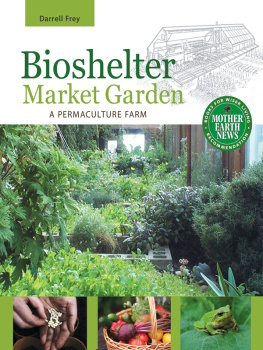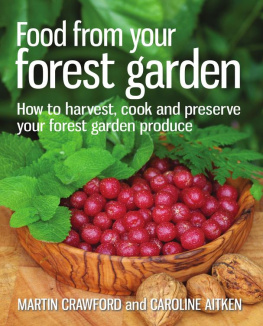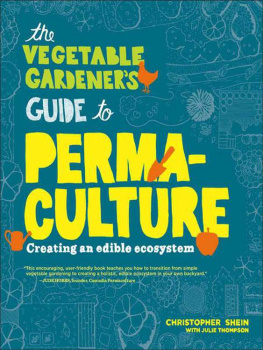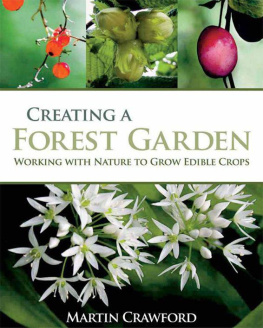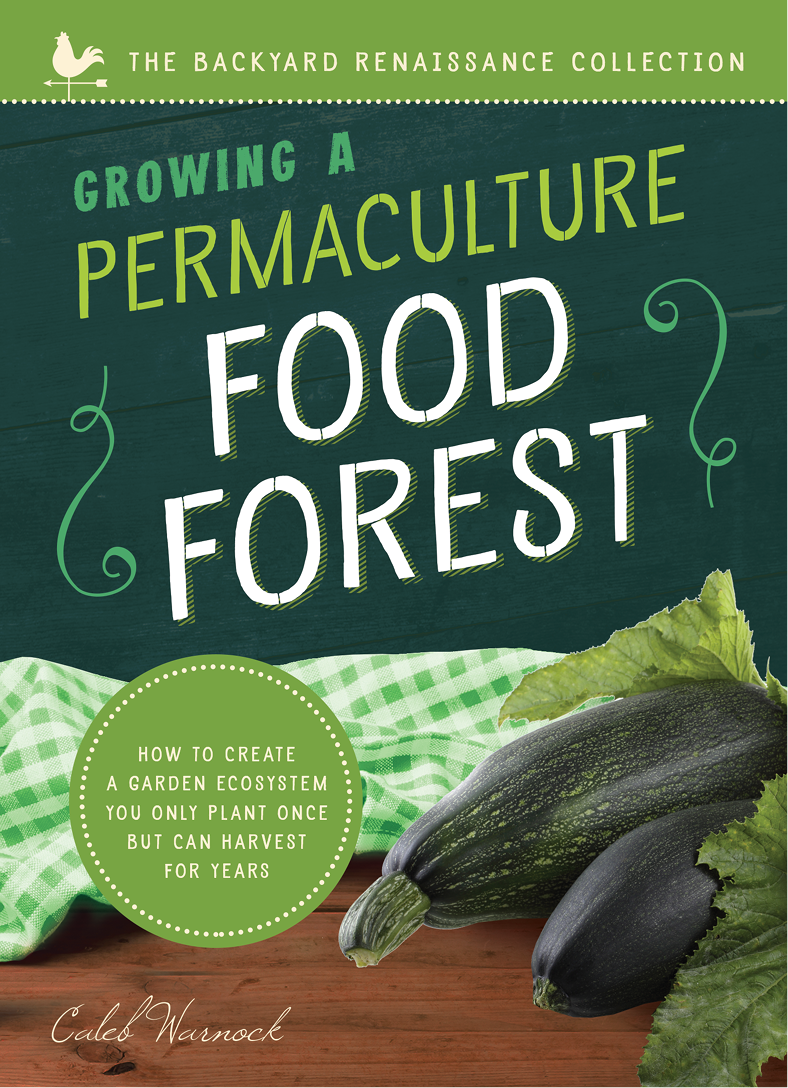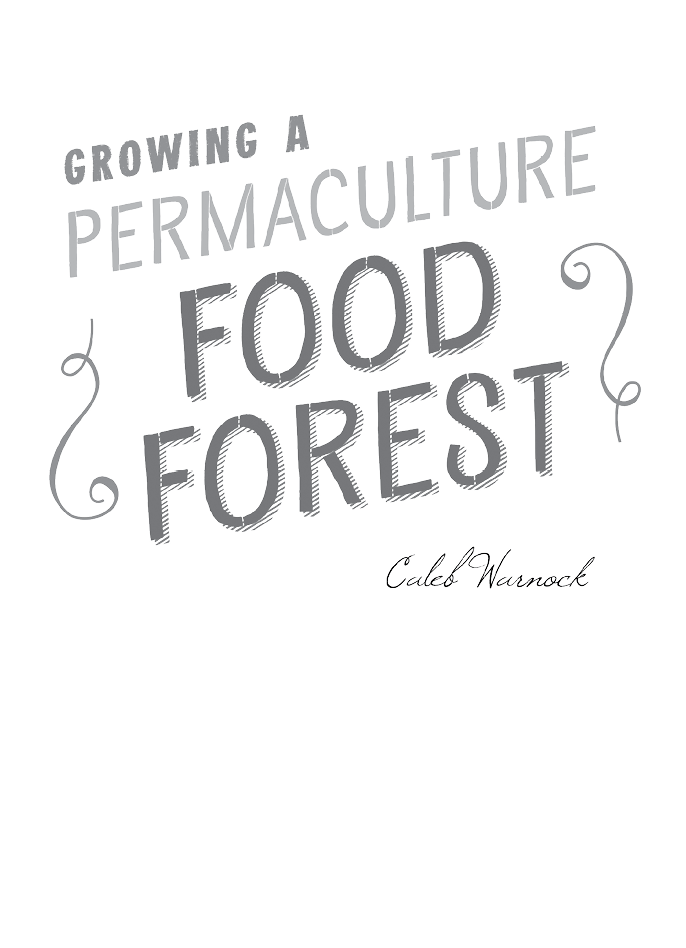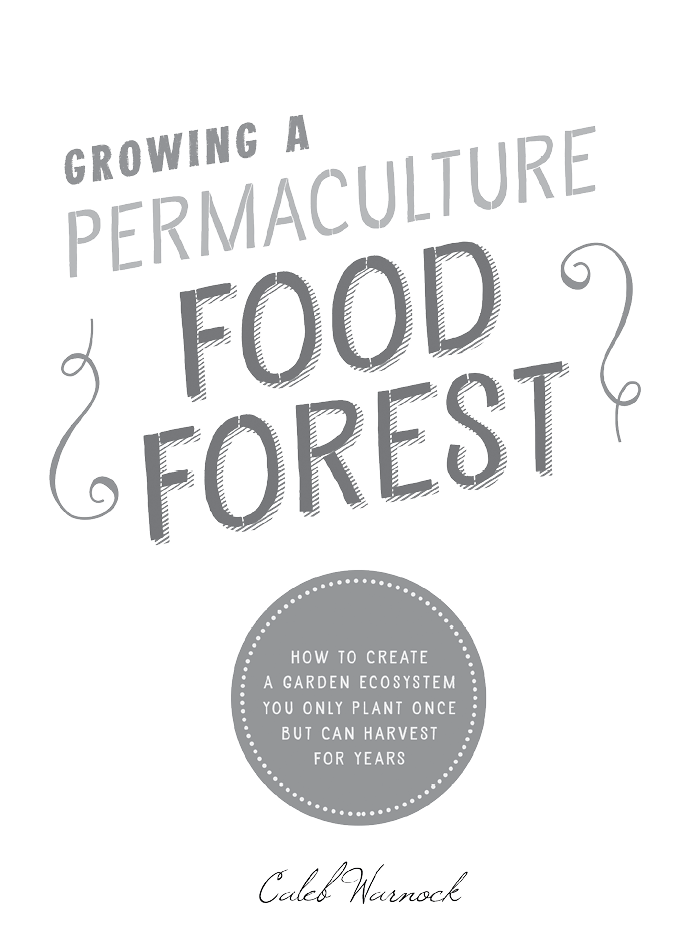Copyright 2017 by Caleb Warnock and Kami Telford
All rights reserved.
Published by Familius LLC, www.familius.com
Familius books are available at special discounts for bulk purchases, whether for sales promotions or for family or corporate use. For more information, contact Familius Sales at 559-876-2170 or email orders@familius.com.
Reproduction of this book in any manner, in whole or in part, without written permission of the publisher is prohibited.
Library of Congress Cataloging-in-Publication Data
2017942638
Print ISBN 9781945547348
Printed in the United States of America
Edited by Angela Wade
Cover design by David Miles
Book design by Maggie Wickes
10 9 8 7 6 5 4 3 2 1
First Edition
Reasons to Plant a Food Forest
Little or no maintenance work or time required
Food security
Self-reliance
The grocery store goes on without me
Bless future generations
Little or no water needed (designed for your climate)
No weeding (if desired)
No chemicals
Secret garden (few people would even recognize it as food)
Unpredictable temperatures and weather = no problem
Four-season eating
Shareable
Permaculture is sustainable and self-sufficient
Welcome to the Garden of Eden!
A food forest is simply a place where Mother Nature can grow a garden for you with little or no human intervention. You plant the garden and leave it to go wild, meaning that you permanently leave the care of the garden in the hands of Mother Nature.
In most climates, a food forest is never watered. Instead, the vegetables in the food forest rely entirely on whatever water nature provides. Even in dry climates, you can design a garden that never needs water or a garden that will be watered only during the summer. Unlike most backyard gardens, a food forest is created to be permanent and wild. Wild means you plant the garden once. There is no yearly planting. After the first year, a food forest should perpetuate itself.
Must-Haves: Four Things and Three Decisions
There are four things that you must have before you can start your food forest.
Heirloom seeds and bulbs. A food forest will survive long term only with true seeds, which are seeds and bulbs that are genetically stable. Hybrid and genetically modified seeds and bulbs are not genetically stable, meaning the seed of the plant will not produce true and may not produce at all in future generations.
Heirloom live plants , for the same reason listed above.
Property. If you dont own property, see the section of this book on borrowing a food forest or the section on creating a food forest on public land.
Water (optional) or a knowledge of which plants dont need summer water in dry climates .
Also, there are three decisions that you need to make before you can get started.
Determine who will know the location of the food forest and be allowed to harvest.
Determine to harvest only sustainably. If too much is harvested, the forest will disappear in a year or two (more on this later).
Do you want to control the weeds?
Designing Your Food Forest
T he first step in designing your food forest is to consider your goals carefully. The worksheet below is designed to help you pinpoint your harvest goals. DO NOT plan to fill out the worksheet now. Instead, read the worksheet as an overview of some of the questions you will need to consider as you read this book. When youve read all the information you need, come back to the worksheet to help you start putting your plan in action.
My food forest location is (circle one):
a land I plan to own long term
b land I plan to own for only a few years
c public land with public access and permission from the proper authority in writing
d wild land without written permission
e land someone else owns (borrowed land)
The estimated size of my food forest is ________ square feet. (To find this measurement, multiply the length by the width of the garden space you plan to have.)
Garden map: create a rough sketch of your garden space, showing your home (if your food forest will be near your home).
Direct sun? Label areas of the garden that are in full shade, part shade, or dappled light.
My food forest will be (circle):
a dry in summer
b watered in summer (rain or sprinkler)
My food forest will include (circle all that apply):
a root vegetables
b salad greens
c grains
d potherbs
e flowers for beauty
f culinary herbs
g medicinal herbs
h outdoor seating or living area
i decorative fountain or water feature
j invasives in pots
k invasives in the soil
l grape vine(s): purple, rose, white champagne
7. Berry bushes (circle all that apply):
a raspberries
b blackberries
c boysenberries
d blueberries
e currants
f goji
g nanking cherry bush
h other
i none
8. Fruit trees (circle all that apply):
a apple
b pear
c peach
d apricot
e plum
f hardy kiwi
g nectarine
h cherry
i figs
j nut trees
k tropicals
l other
m none
Favorites. List your must-haves here:
Choose one. All dollar amounts below are equivalent to the prices you would pay to buy the same organic food:
a I need my food forest to be small, producing $100 to $500 worth of fresh produce annually
b Medium harvest of $1,000 to $2,000 worth of fresh produce annually
c Large self-reliant harvest that will provide the majority of my familys food
What is the rough budget for creating my food forest? (The budget should cover the cost of seeds, bulbs, and live plants, as well as design and installation, if needed.)
The vegetable portion of the garden will be (circle one):
a Mostly root vegetables (self-reliance)
b Mostly greens (salad garden)
Best Vegetables for Food Forests
Asparagus
Harvestable in: spring
Summer water (dry climate): not needed
Natural propagation: multiplier bulbs/roots
Spreading? creeping
Sun requirements: full sun, full shade, part shade
Belgian winter leeks
Harvestable in: spring, summer, autumn, winter, storage
Summer water (dry climate): occasional (every 23 weeks)
Natural propagation: self-seeding, multiplier bulbs/roots
Spreading? creeping
Sun requirements: full sun, full shade, part shade
Note: Also produces elephant garlic bulbs, which will multiply.
Blackberries
Harvestable in: summer, autumn
Summer water (dry climate): occasional (every 23 weeks)
Natural propagation: perennial
Spreading? not in dry climates; invasive in wet climates
Sun requirements: full sun, full shade, part shade
Broad Windsor fava bean
Harvestable in: summer, storage
Summer water (dry climate): not needed
Natural propagation: self-seeding
Spreading? no
Sun requirements: full sun, part shade
Broom corn
Harvestable in: autumn, storage
Summer water (dry climate): occasional (every 2 weeks)
Natural propagation: self-seeding
Spreading? no
Sun requirements: full sun
Note: Broom corn does not form cobs like garden corn, but it is edible. Broom corn is a form of corn that more closely resembles corn in nature (wild corn, also called landrace corn), and this is why it may be possible to grow it in a food forest. You should plant 100 broom corn seeds at the very minimum, and 250 for better long-term success. You will need to allow between 100 and 200 seeds to fall to the ground each year to self-plant, so keep this in mind when harvesting broom corn from a food forest.


